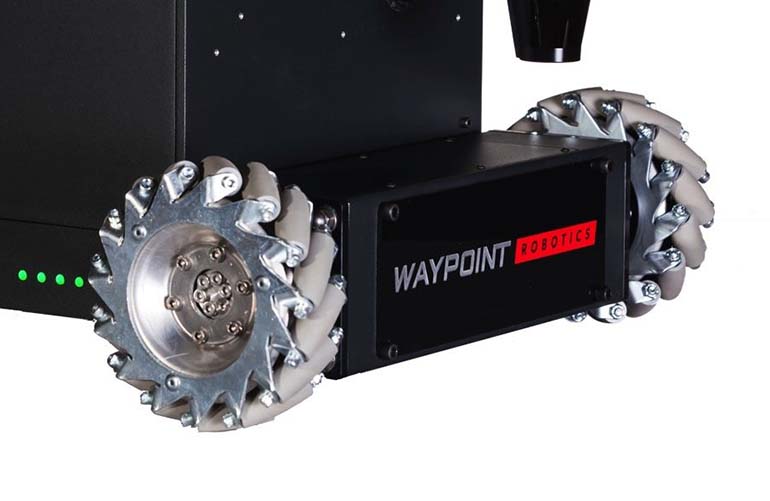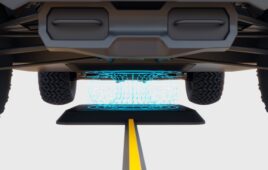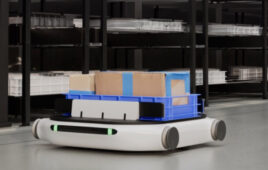
Locus Robotics and Waypoint Robotics bring compatible technologies together. Image credit: Locus Robotics & Waypoint Robotics
Locus Robotics today acquired Waypoint Robotics. This is going to be a great combination of compatible technologies, market focus and skillset/personalities. Here’s why.
Locus Robotics has built a reputation as one of the leaders in the warehouse automation space. The company has raised $305M since its founding in 2014. The company is one of the first AMR unicorns with a valuation over $1B.
Locus Robotics is also one of the market leaders in commercializing the robots-as-a-service (RaaS) business model. In a RaaS business model, clients pay for the service delivered by the solution, instead of paying to acquire a capital asset, and then amortizing/depreciating the cost of that asset. Locus recently celebrated half-a-billion picks by a Locusbot, proof that customers value the Locus solution.
For Locus’ customers, leveraging a RaaS economic model means they can pay for the automation service out of operating expense budgets, instead of capital expense budgets. But, it also has the side effect of reducing risk for the customer with a new technology. In other words, it’s easy to remove the solution if it doesn’t work. This basic tenet is what aligns a RaaS-based business model so tightly with the success of the client.
Deconstructing RaaS
From this simple idea, Locus has built a very healthy business and a committed customer base. However, RaaS isn’t ideal for every application. To be a successful RaaS solution, the operation requires three success factors:
- The problem must be scalable.
- The Service Level Agreement (SLA) must be measurable and funded by an operating expense.
- Output must be guaranteed – i.e. there has to be strong commitment from the vendor to identify, intercept and prevent failures from happening.
The business model for RaaS is simple. Customers pay a monthly, quarterly or yearly fee, based on the amount of work done by a Locus robot. We don’t know exactly what Locus’ installed robot population looks like, nor what the average contract cost is. However, Table 1 outlines three possible yearly revenue outcomes based on the population of 5000 robots and an average cost per hour, single shift contract between $5-$9/hour.
Table 1 – Simple RaaS Business Model with 5000 robot population
| Scenario 1 | Scenario 2 | Scenario 3 | |
| Robot Population | 5,000 | 5,000 | 5,000 |
| Cost per hour | $5 | $7 | $9 |
| Hours per year | 2080 | 2080 | 2080 |
| Revenue/robot per year |
$10,400 | $14,560 | $18,720 |
| Total Revenue/Year | $52,000,000 | $72,800,000 | $93,600,000 |
Locus has evolved an efficient fleet management and order management software stack to manage the warehouse workflow of both human associates and LocusBots. Leveraging artificial intelligence, this is the part of the system that decides how to organize the warehouse operations each day and then assign the robots to help the human associates in an optimized picking order. Locus has its roots in e-commerce, so it understands how to optimize inventory workflow through the warehouse.
The unseen part of the Locus Robotics software stack is its remote operations center (ROC) software. This is the layer of software utilized by the Locus support team and customer success team to monitor, troubleshoot, update and support the robots on the floor – remotely.
The biggest advantage of a RaaS company, like Locus, is that it has access to how solutions are operating in the field, every hour of every day, for every customer. Aggregating this data, Locus product managers have the ability to see trends and to prioritize the product enhancements that will have immediate and wide ranging impact. It’s a product manager’s dream scenario. If certain elements of the robot are failing prematurely, they know about it and can react preemptively to maintain customer satisfaction.
The Waypoint journey
Waypoint Robotics has built a reputation for well-engineered solutions. You might call it a “roboticist’s robotics” company. The system was built to be a mobile platform for any number of AMR applications.
Up to this point, the company has only sold its solutions in a classic capital expenditure business model. Waypoint clients buy the AMRs and own them. This enables the client to customize the payload on the AMR and to deploy it into any application it chooses.
Since its inception, Waypoint has focused on omnidirectional motion as the basis and differentiator for its solutions. This fundamental design decision has both advantages and disadvantages in terms of the types of applications and work environments that the robot can operate in.

Mecanum wheels are core to the omnidirectional motion of Waypoint AMRs. | Image credit: Waypoint Robotics
The Waypoint AMRs, Vector and MAV3K, both use mecanum wheels to achieve omnidirectional motion. Mecanum wheels have the advantage of being able to easily move the platform in any direction without additional rotation or jogging. The downsides of mecanum wheels however, are fundamental:
- Mecanum wheels slip as they turn. This complicates odometry, localization and accuracy. All of this can be compensated for with control software and the use of sensor fusion to maintain localization.
- Mecanum wheels wear quickly. This is a preventative maintenance issue, but uneven wear can impact drive performance in unexpected ways.
- Mecanum wheels don’t like to operate in wet or oily conditions.
- Mecanum wheels/drives are the most expensive locomotion option for an AMR.
On the positive side, omnidirectional motion for an AMR is desirable when there are tight aisles to navigate, or when approach paths to a “waypoint” are limited. A good use for an omnidirectional AMR is in machine tending with a mobile manipulator, and Waypoint has a number of AMRs in production for customers.
On most machine shop floors, there often isn’t a lot of floor space available in front of the machine. This makes it difficult for other styles of AMRs to approach the target.
As a result of the design choices, Waypoint has found success in many manufacturing applications such as work-in-process handling, tray handling, machine tending and finished goods movement.
In addition, Waypoint also has a heavy payload platform with the MAV3K AMR (3000 lb. payload capacity). The MAV3K can handle fully loaded pallets or it can be a mobile assembly base for large items such as appliances, or car/aviation parts.
A compatible union?
When you put both companies side by side, it’s easy to see why this is going to be a compatible union. Currently, there is little to no overlap in the products and markets served. Yet, there are immediate opportunities for green field sales of the Waypoint product line into the existing (and future) Locus customer base.
The immediate opportunity is bring the MAV3K AMR (heavy payload) under the supervision of the Locus fleet management solution and deploy it into one of two possible warehouse workflows:
- Add the Locus UI to the MAV3K and deploy it into heavy payload person-to-goods warehouses. In this scenario, the MAV3K becomes a “LocusBot3K” that can lead an associate to pull items from inventory that are too heavy for the current LocusBot model.
- Deploy the MAV3K into new warehouse workflows, moving heavy mixed load or unit load pallets around the warehouse, including to/from the shipping dock.
Other intralogistics workflows become possible now with the integration of Waypoint AMRs and Locus Robotics’ software. Both solutions are built on top of the ROS software stack.
According to Jason Walker, CEO and co-founder of Waypoint, the company will continue to sell Waypoint solutions into the manufacturing market. The company has some well established customers within the manufacturing market. The added credibility of being a part of the Locus Robotics family should help reduce the barriers to acceptance, reduce the risk for new clients, and shorten sales cycles.
A few bumps in the road ahead
What’s yet to be determined is how the organizations will combine their sales and support teams. This is where a clash of cultures and processes between a RaaS-based sales model and a capital equipment sales model may pose some hurdles. It will be interesting to watch what type of hybrid selling and support model emerges from this union.
One thing is clear, the companies should have a nice fit of corporate cultures since they are both based in the northeast – in fact the current corporate headquarters are a 40-minute drive from each other. Both organizations have strong ties to the Boston robotics community and to MassRobotics. This was likely one key factor in both the introduction of the companies as well as the potential for a successful integration.
The robotics acquisition market heats up
It’s easy to look at this acquisition as an obvious winner. There has been an uptick in both mobile robotics company investment as well as acquisitions in the past five years.
Are there other acquisitions on the horizon? That’s an easy YES. There are a number of undervalued robotics related companies. This includes both AMR suppliers, as well as peripheral, sensor and software suppliers.
Within the warehousing space, there are still a number of warehouse management software (WMS) providers that are currently software-only solutions. The core of Locus technology is, after all, its WMS. There are a number of WMS competitors on the market who could make a similar play; pick up a stand alone AMR company, and fully integrate it into its workflow.
Similarly, as we witnessed earlier this year with the acquisition of Fetch by Zebra Systems, there are any number of warehouse component suppliers who might want a bigger piece of the warehouse systems play.
Finally, there a number of robotic-based warehouse inventory counting solutions, including companies like Ware Robotics, that are one more piece of the puzzle. Any one of these technologies/companies might be a likely acquisition for Locus or other warehouse solution leaders in the near future.











Tell Us What You Think!
You must be logged in to post a comment.